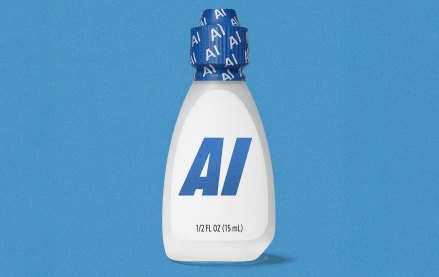The Rundown: Amazon’s latest advertising play could cause a privacy headache
Amazon is delving into dangerous waters.
News that the company is now sending free samples to customers — first reported by Axios — is yet another growth opportunity for its fast-growing ad business. Via the program, Amazon uses its customer data to target specific groups of people and deliver product samples to them on behalf of brands.
But the program also throws up new questions about data privacy in the age of Amazon. The retailer now has data its customers — but even more behavioral data on those who subscribe to its Prime membership program and consume content via its services with the same login.
Some consumers are already being surprised by items arriving on their doorsteps that they didn’t order, Axios reports. And customers are opted in by default.
Of course, privacy is a slippery thing. But while basing an ad strategy on user data has been the norm over the past decade, platforms have come under increased scrutiny for the practice over the past twelve months. Facebook and Google both leverage their user data to target ads on behalf of advertisers — although the company maintains it doesn’t sell its users information. Regulatory efforts have stepped up in recent months to create some guardrails around how these companies operate, with Amazon increasingly in the crosshairs of those efforts Google, Facebook and others.
The new program means yet another potential growth point for Amazon beyond its display ad business, which remains the largest piece of its ad offering. However, it’s imperative Amazon branch out beyond display if it is to make this a consistently growing part of the company.
Amazon’s ad business, meanwhile, got another big boost this week when Pivotal Research analyst Brian Wieser wrote on Sunday that it made $9 billion ad revenue over the past year. More interestingly, per Pivotal calculations, a third of that is coming from co-op budgets, which means Amazon is promoting brands that are selling well on Amazon.
“Amazon’s approach to advertising is centered around helping the company reduce prices consumers pay for products, for this reason, in some ways advertising is a means to an end rather than the end itself at Amazon,” the note reads. “However, because of Amazon’s scale and the desirability of its data and ad inventory, advertising should be able to provide an opportunity for incremental growth that is independent of consumer spending trends.” — Shareen Pathak
Unionization moves
The labor organizers’ momentum that built among publishers last year has definitely carried over into 2019. On Wednesday, Refinery29 employees announced they had formed a union with the Writers Guild of America, joining a list of digital publishers including Vice, Ziff Davis and New York Magazine that have made headlines with their unionization efforts. This drumbeat of labor news is enough to make most publisher CFOs reach for their Pepto-Bismol. But the executives with the most to think about might be in operations or product instead. In the letter that announced they’d organized, Refinery’s employees put transparency at the top of the list of things they expected to address with management.
“Refinery29 makes a good-faith effort to keep employees updated and often provides open forums for employees to ask questions and be part of the conversation,” the letter read. “However, when it comes to times of change, growth, or shift, we need to have a seat at the table.” For an industry that has been reinventing itself for the past 20 years, the arrival of unions is, in its way, a good sign, proof that digital media has begun to mature, and that its workers see it as an industry worth committing to over the long term.
But digital media is also an industry that rewards the players who can pivot the fastest. And the extra input that unionized newsrooms expect to add might make some publishers start to feel more lead-footed than they’d like. — Max Willens
Sears makes a last-ditch effort
Sears’ last-minute shot to stay in business came on Tuesday in the form of a bid from chairman and former CEO Eddie Lampert, who had offered a bid that would keep more than 400 Sears stores open. The court approved the bid; now Lampert just needs a deposit of $120 million for the plan to go through. While the move would save jobs, it’s only prolonging the inevitable. Lampert has already poured billions into the company, as well as selling off Sears’ only remaining assets: its exclusive brands, Craftsman and Kenmore. By staying afloat, Sears is simply crowding space that could be used to give other struggling retailers room in the market to breathe, namely, JCPenney. The department store’s new CEO, Jill Soltau, is making moves: She announced Wednesday that three JCPenney stores will close this spring, potentially with more closures to come. But unlike Sears, JCPenney’s store closings aren’t necessarily a death knell — the company is still in a position where store closings are part of the broader strategy that is still forming. And Sears finally putting itself out of its misery would only help JCPenney avoid the same fate. — Hilary Milnes
More in Marketing

‘Intentionally being cautious’: Why the ad industry isn’t ready to let AI agents spend ad dollars
For now, LLMs are being used as accelerants, not decision makers. They compress workflows. They do not spend the ad dollars

Walmart says ‘open partnerships’ are central to its AI strategy, while Amazon goes it alone
Walmart and Google have announced a partnership that brings the retailer’s shopping experience inside Google’s AI assistant, Gemini.

The case for and against influencer-led Super Bowl ads
Inside the Super Bowl ad debate: Celebrities offer mass appeal, but creators provide better engagement.





